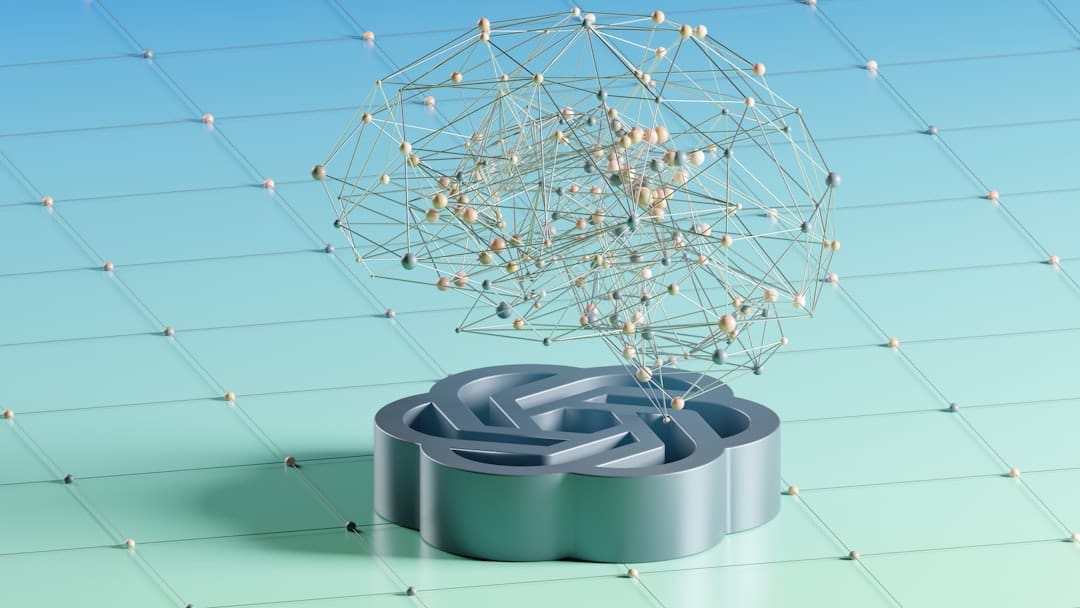Spiking Neural Networks (SNNs) are artificial neural networks designed to emulate the functioning of biological neural networks more closely than traditional artificial neural networks. SNNs utilize discrete spikes or pulses for information transmission, mirroring the communication method of neurons in the brain. This approach contrasts with conventional artificial neural networks, which employ continuous values for neuron activations.
The spike-based communication in SNNs offers a more accurate representation of biological neural processes, making them a promising avenue for developing more efficient and brain-like artificial intelligence systems. Recent years have witnessed substantial progress in the field of artificial intelligence, with deep learning and neural networks driving advancements in various applications, including image recognition, natural language processing, and autonomous systems. However, traditional neural networks face challenges related to energy efficiency, real-time processing capabilities, and scalability.
SNNs present a potential solution to these limitations by incorporating the brain’s efficient information processing mechanisms. Consequently, there is increasing interest in exploring the unique features of SNNs and their potential applications in artificial intelligence.
Key Takeaways
- Spiking Neural Networks (SNNs) are a type of artificial neural network that closely mimics the behavior of biological neurons, offering potential advantages in AI applications.
- SNNs have unique capabilities such as event-driven processing, low power consumption, and the ability to process spatiotemporal information, making them suitable for tasks like pattern recognition, sensor data processing, and real-time processing.
- SNNs have applications in AI for tasks such as speech recognition, image processing, robotics, and neuromorphic computing, offering potential for more efficient and brain-inspired computing systems.
- Challenges in implementing SNNs include hardware limitations, algorithmic complexity, and the need for specialized training methods, but ongoing research is addressing these obstacles.
- Training and optimizing SNNs for AI involves techniques such as spike-timing-dependent plasticity, surrogate gradients, and neuromodulation, with potential for improved performance and efficiency in AI tasks.
- Future developments in SNNs could lead to advancements in brain-computer interfaces, autonomous systems, and cognitive computing, with potential to revolutionize AI applications in various industries.
- In conclusion, harnessing the potential of SNNs for AI requires addressing challenges in implementation, optimizing training methods, and exploring the wide-ranging applications and future impact of this promising neural network paradigm.
Understanding the Unique Capabilities of Spiking Neural Networks
Here is the rewritten text with 3-4 Event-Driven Processing for Efficient Computation
SNNs have a significant advantage in their ability to process information in an event-driven manner, where computations are triggered by the occurrence of spikes. This asynchronous processing allows SNNs to operate with low power consumption and high efficiency, making them well-suited for edge computing and resource-constrained devices.
Capturing Temporal Dynamics for Precise Timing
Additionally, SNNs exhibit temporal dynamics that enable them to capture the precise timing of spike events, which can be crucial for tasks such as speech recognition and sensory processing.
Continuous Learning and Adaptation for Dynamic Environments
Furthermore, SNNs have the potential to support continuous learning and adaptation, thanks to their ability to encode and process spatiotemporal patterns in a dynamic fashion. This makes them suitable for tasks that involve online learning, continual adaptation to changing environments, and efficient memory utilization.
Outperforming Traditional Neural Networks
By leveraging these unique capabilities, SNNs have the potential to outperform traditional neural networks in tasks that require real-time processing, low-latency decision-making, and energy-efficient computations.
Applications of Spiking Neural Networks in AI

The unique capabilities of SNNs open up a wide range of potential applications in AI. One area where SNNs show promise is in neuromorphic computing, where hardware implementations of SNNs can be used to build brain-inspired computing systems. These systems have the potential to revolutionize the way we design and deploy AI algorithms, enabling more efficient and intelligent edge devices for applications such as robotics, autonomous vehicles, and IoT devices.
SNNs also hold great potential for tasks that require temporal processing and event-based sensing, such as audio and speech processing, event recognition in video streams, and sensor data analysis. Their ability to capture precise timing information and process spatiotemporal patterns makes them well-suited for these tasks, offering improved performance and efficiency compared to traditional neural networks. Furthermore, SNNs have shown promise in cognitive computing applications, where they can be used to model complex cognitive processes such as attention, memory, and decision-making.
By leveraging the brain-inspired computational principles of SNNs, researchers are exploring new frontiers in AI that could lead to more human-like intelligence and behavior in machines.
Overcoming Challenges in Implementing Spiking Neural Networks
| Challenges | Metrics |
|---|---|
| Data sparsity | Sparsity ratio, data distribution |
| Hardware limitations | Processing speed, memory usage |
| Training complexity | Training time, convergence rate |
| Algorithm optimization | Accuracy, computational efficiency |
While SNNs offer unique capabilities for AI applications, there are several challenges that need to be addressed in order to effectively implement and deploy them. One major challenge is the lack of standardized tools and frameworks for developing and training SNNs. Unlike traditional neural networks, which have well-established libraries and frameworks such as TensorFlow and PyTorch, SNNs require specialized tools for simulating spiking behavior, encoding input data into spike trains, and training network parameters.
Another challenge is the limited availability of large-scale spiking neural network datasets for training and evaluation. The lack of standardized benchmarks and datasets makes it difficult to compare the performance of different SNN models and algorithms, hindering the progress of research in this field. Additionally, there are challenges related to hardware implementation and scalability.
While SNNs show promise for edge computing and low-power devices, there is a need for efficient hardware architectures that can support the real-time processing requirements of SNNs while maintaining low energy consumption.
Training and Optimizing Spiking Neural Networks for AI
Training SNNs presents unique challenges compared to traditional neural networks due to their spike-based communication and temporal dynamics. One approach to training SNNs is through the use of surrogate gradient methods, which approximate the gradient of non-differentiable spike functions to enable backpropagation-based training. These methods allow researchers to leverage existing deep learning frameworks for training SNNs while addressing the challenges associated with spike-based communication.
Another approach involves developing specialized training algorithms that take into account the temporal dynamics of SNNs, such as spike-timing-dependent plasticity (STDP) rules that govern synaptic weight updates based on the precise timing of spike events. These algorithms enable SNNs to learn spatiotemporal patterns and adapt to changing input statistics over time, making them suitable for tasks that require continual learning and adaptation. Furthermore, optimizing the performance of SNNs requires careful consideration of network architecture, neuron models, synaptic connectivity patterns, and learning rules.
Researchers are exploring novel network architectures such as spiking convolutional neural networks (SCNNs) and recurrent spiking neural networks (RSNNs) to address specific tasks such as image recognition, sequence processing, and memory-based computations.
Future Developments and Potential Impact of Spiking Neural Networks in AI

Looking ahead, there are several exciting developments on the horizon for SNNs and their impact on AI. One area of focus is on developing more efficient hardware implementations of SNNs, including neuromorphic chips and specialized accelerators that can support real-time event-driven computations with low power consumption. These hardware advancements have the potential to enable the widespread deployment of SNN-based AI systems in edge devices and IoT platforms.
Another area of interest is in exploring the intersection of SNNs with other emerging technologies such as quantum computing and nanoscale devices. Researchers are investigating how SNNs can benefit from quantum-inspired algorithms and hardware architectures to achieve unprecedented levels of computational efficiency and parallelism. Furthermore, the potential impact of SNNs extends beyond traditional AI applications, with implications for fields such as neuroscience, cognitive science, and brain-computer interfaces.
By developing more biologically plausible models of information processing in the brain, SNNs have the potential to advance our understanding of cognition and consciousness while enabling new forms of human-machine interaction.
Harnessing the Potential of Spiking Neural Networks for AI
In conclusion, spiking neural networks offer unique capabilities that make them well-suited for a wide range of AI applications. Their event-driven processing, temporal dynamics, and energy efficiency set them apart from traditional neural networks, opening up new possibilities for developing more intelligent and efficient AI systems. While there are challenges to overcome in implementing and training SNNs, ongoing research efforts are making significant strides in addressing these challenges.
As we look towards the future, the potential impact of SNNs on AI is vast, with implications for hardware development, algorithmic innovation, interdisciplinary research, and real-world applications. By harnessing the potential of spiking neural networks, we have the opportunity to unlock new frontiers in AI that could lead to more brain-like intelligence in machines while advancing our understanding of the human brain. As researchers continue to explore the capabilities of SNNs and their impact on AI, we can expect to see groundbreaking advancements that will shape the future of artificial intelligence.
If you’re interested in exploring the potential applications of spiking neural networks in virtual reality environments, you may want to check out this article on virtual reality (VR). Virtual reality technology is constantly evolving, and understanding how spiking neural networks can enhance the immersive experience of VR could be a game-changer in the development of virtual worlds and ecosystems.
FAQs
What is a spiking neural network?
A spiking neural network is a type of artificial neural network that is inspired by the way neurons in the brain communicate with each other using spikes or action potentials.
How does a spiking neural network differ from other types of neural networks?
Unlike traditional artificial neural networks, which use continuous values to represent neuron activations, spiking neural networks use discrete spikes or pulses to represent the firing of neurons. This allows for more biologically realistic modeling of neural activity.
What are the advantages of spiking neural networks?
Spiking neural networks have the potential to be more energy-efficient and computationally powerful than traditional neural networks. They also have the ability to process and encode temporal information more effectively.
What are some applications of spiking neural networks?
Spiking neural networks have been used in various applications such as pattern recognition, robotics, sensory processing, and cognitive modeling. They are also being explored for use in neuromorphic computing and brain-machine interfaces.
What are some challenges in the development and use of spiking neural networks?
Challenges in the development and use of spiking neural networks include the need for efficient learning algorithms, hardware implementation, and understanding the complex dynamics of spiking neurons. Additionally, there is a need for more research to fully understand the capabilities and limitations of spiking neural networks.











Leave a Reply